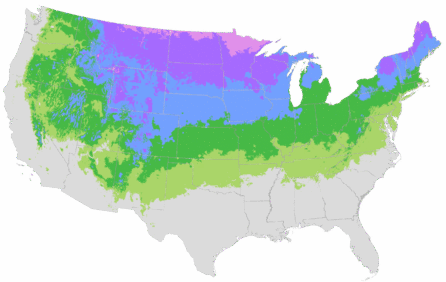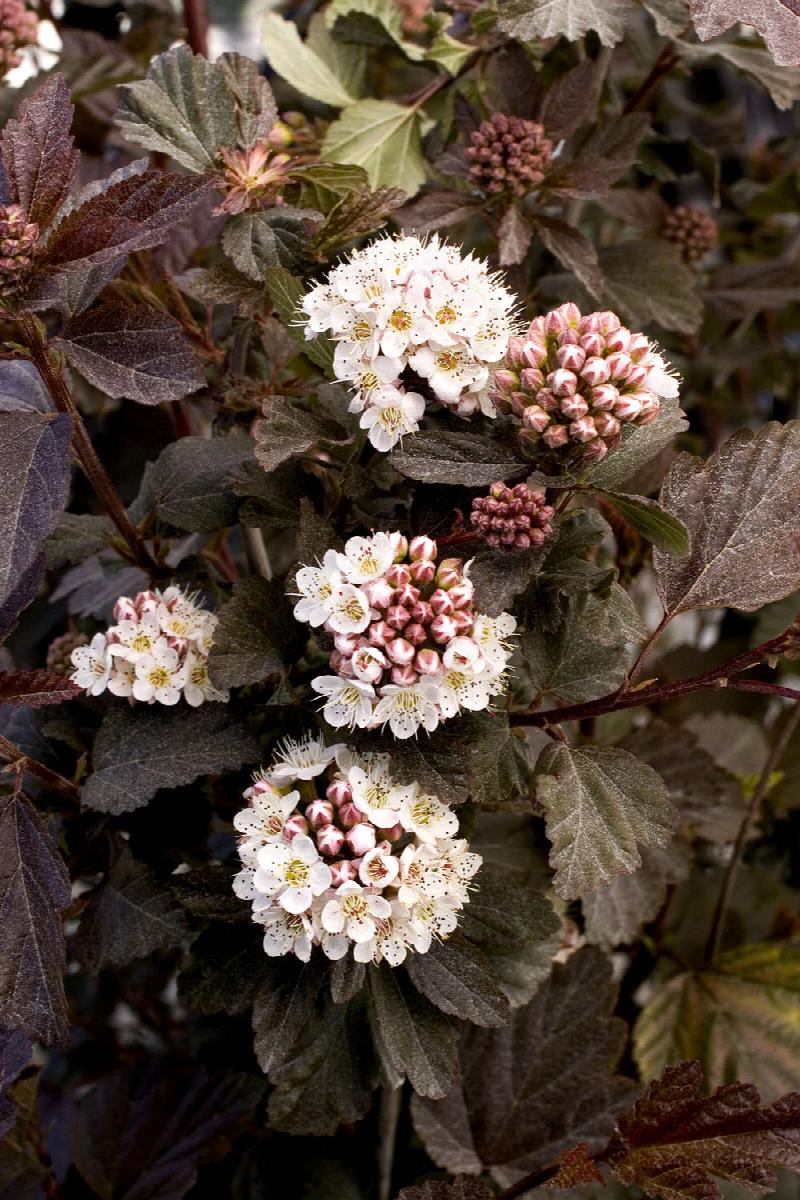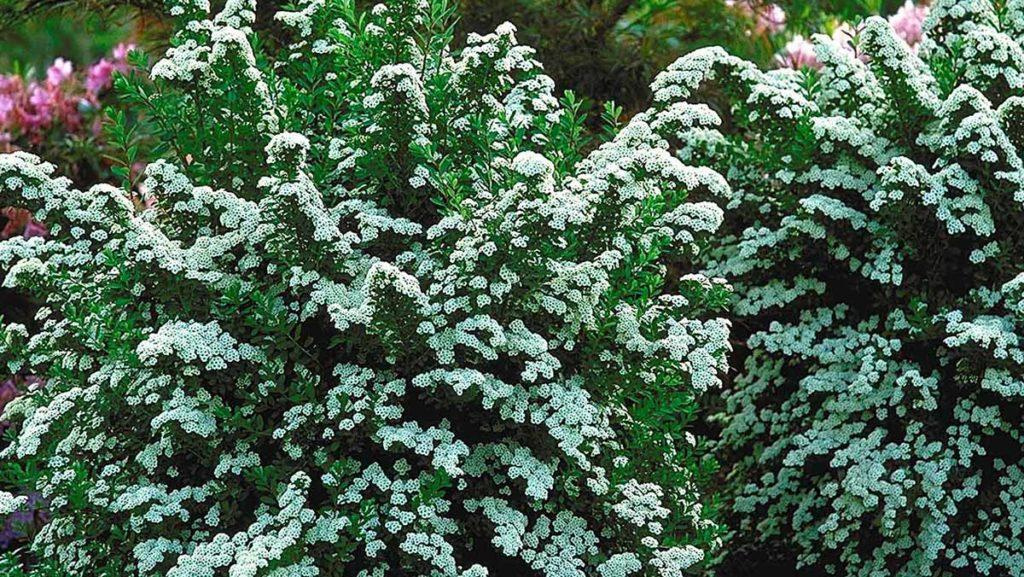Diabolo® Ninebark
Physocarpus opulifolius 'Monlo'
Pronunciation: fy-so-KAR-pus op-yoo-lih-FOH-lee-us
SKU #06393
| Description | The stunning deep purple foliage of this versatile shrub makes it a standout in the garden. Plant en masse to create a richly colored, dense hedge or screen. Profuse creamy white flower clusters adorn the foliage in summer. Foliage can become green in high heat or partial shade; tolerates moderate drought in cooler summer regions. Deciduous. |
|---|---|
| Light | Full sun, Partial sun |
| Watering | Water when top 2 inches of soil is dry. |
| Blooms | Summer |
| Mature Size | Moderate growing; reaches 8 to 10 ft. tall and wide. |
| Deciduous/Evergreen | Deciduous |
|---|---|
| Special Features | Attractive Bark, Dramatic Foliage Color, Easy Care, Waterwise, Benefits Birds |
| Problems/Solutions | Very Wet Areas |
| Growth Rate | Moderate |
| Growth Habit | Upright |
| Flower Attributes | Showy Flowers |
| Patent Act | Asexual reproduction of plants protected by the Plant Patent Act is prohibited during the life of the patent. |
| Landscape Use | Border, Hedge, Privacy Screen |
|---|---|
| Design Ideas | This is a beautiful native shrub that is ideal for the Pacific Northwest and other moist areas prone to acidic soils. Its great fall color and unique winter bark display makes it a good background plant for beds and borders. It's a natural as a single specimen for sunny spots of woodland or wild gardens. Excellent choice for all native and wildlife gardens where seasonal changes and habitat are crucial. A highly colorful and versatile addition to larger landscapes. |
| Flower Color | White |
| Foliage Color | Purple |
| Companion Plants | Fountain Grass (Pennisetum); Spirea (Spiraea); Boxwood (Buxus); Blue Spruce (Picea); Weigela (Weigela) |
| Care | Thrives in average, slightly acidic, well-drained soils, but very adaptable. Best color in full sun; avoid extreme heat and humidity. Water deeply, regularly during first growing season to establish an extensive root system; once established, reduce frequency. Fertilize in spring. Blooms on old wood; prune after flowering to maintain shape. |
|---|
| Lore | The common name of Ninebark comes from the appearance of the bark which is peels away in layers. Native to North America. The inner bark was brewed into a pain reliever and remedy for many other maladies by Native American tribes within this plant's range. Roots were sometimes steam cooked and eaten and plants were used as charms to cause bad luck. |
|---|
This Plant's Growing Zones: 3-7

Your USDA Cold Hardiness Zone:
Your climate may be too cold for this plant
Buy Online
We cannot currently ship this product to your zip code.
Buy Locally
No Retailers found within 50 miles of your zipcode
About Us
We have been pioneers and craftsmen in the art of growing plants for nearly
100 years. Since our founding in Southern California by Harry E. Rosedale, Sr.
in 1926, we have been absolutely dedicated and obsessed with quality.
We have been pioneers and craftsmen in the art of growing plants for nearly 100 years. Since our founding in Southern California by Harry E. Rosedale, Sr. in 1926, we have been absolutely dedicated and obsessed with quality.

